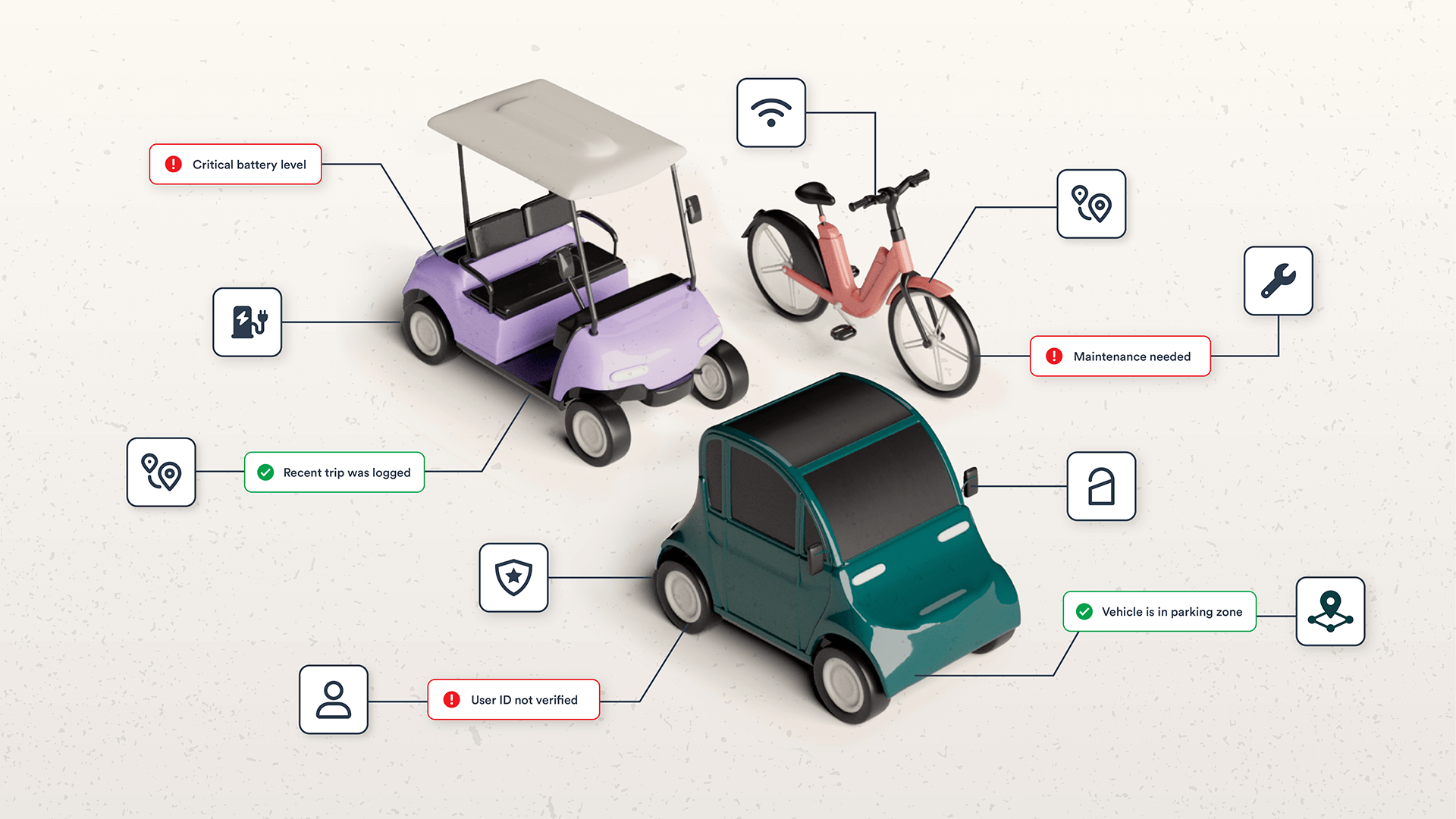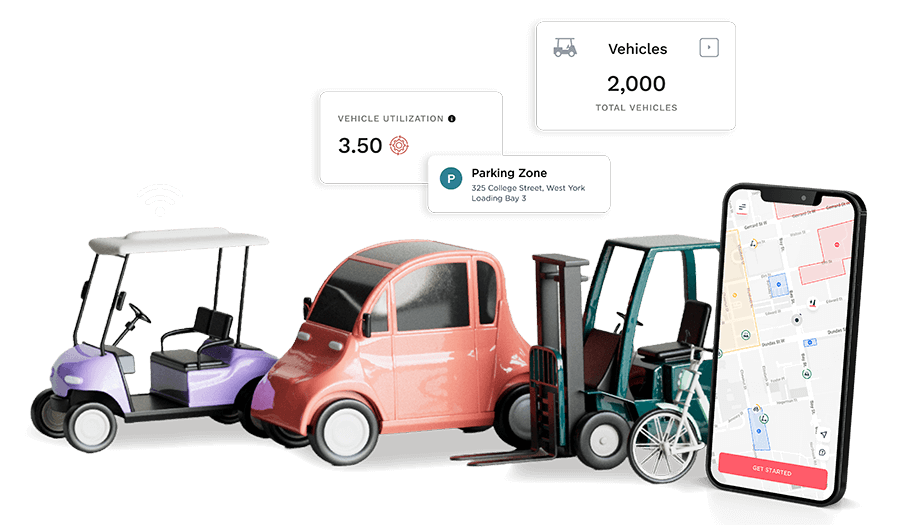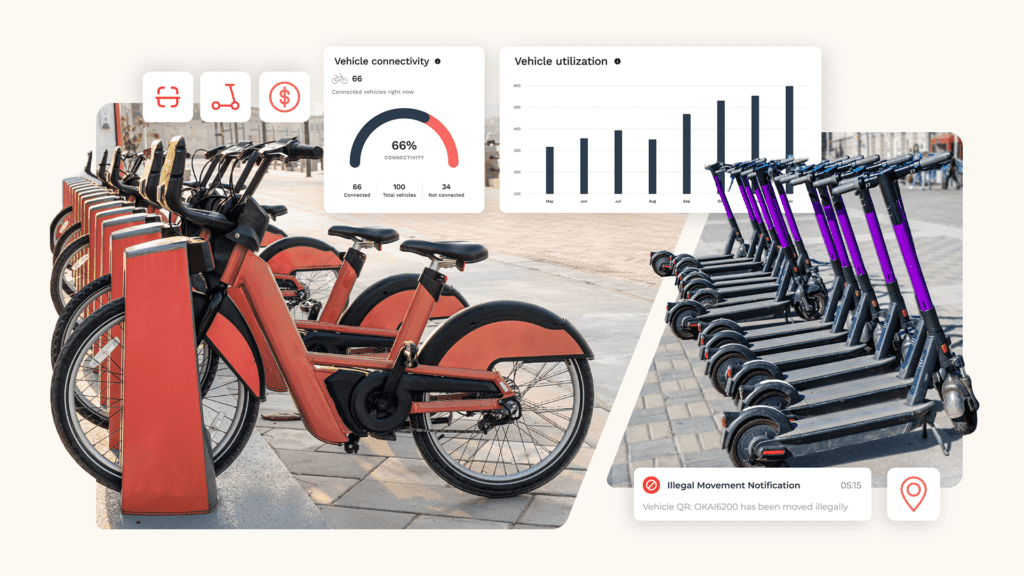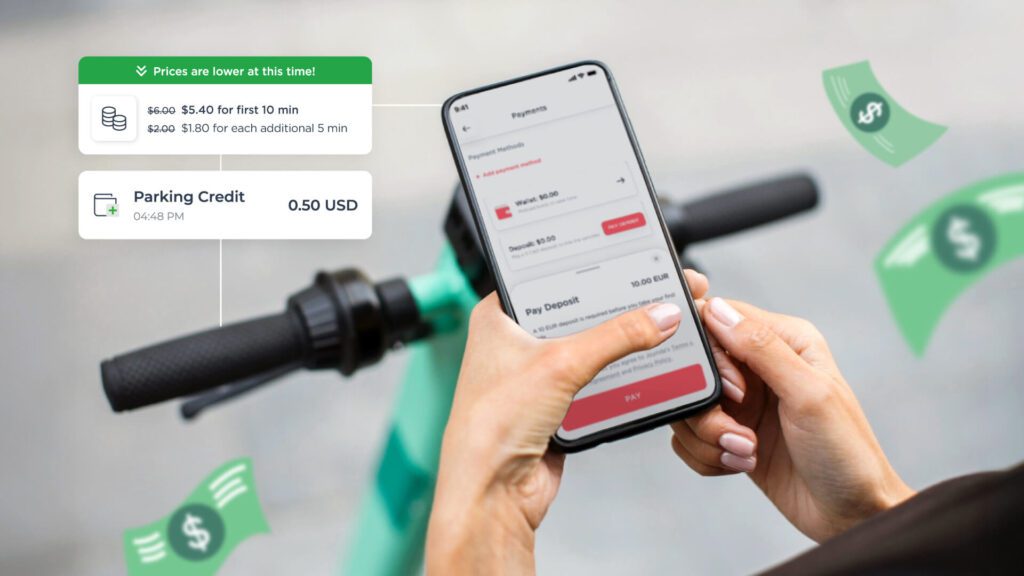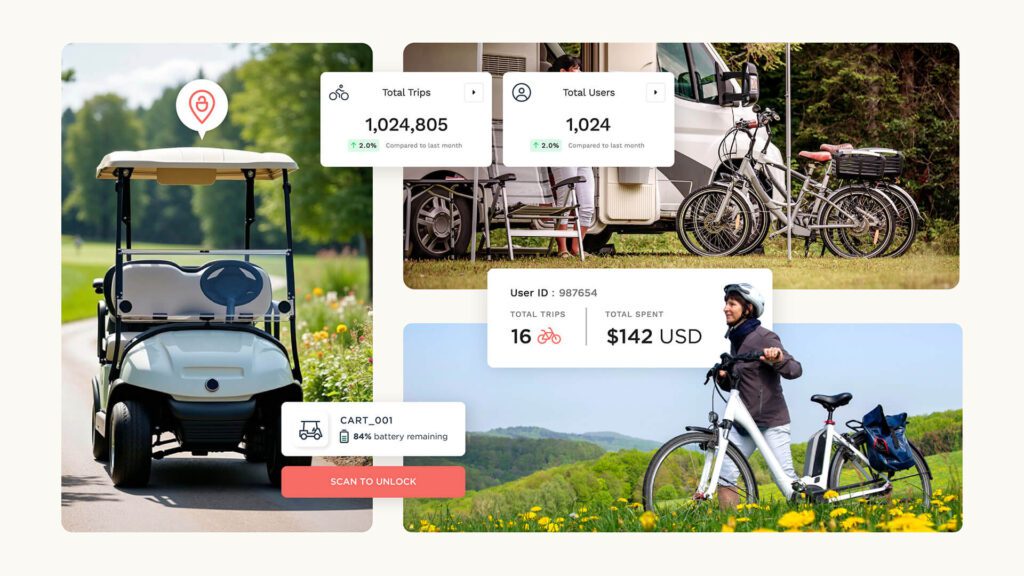What does IoT really mean? Are telematics the same thing? What does ECU stand for–and what’s with all these three-letter acronyms?
The connected vehicle industry has a lot of jargon, but we’re here to help you get up to speed. In this post, we define these and other industry terms you’ll encounter when investigating IoT for fleet vehicles, plus tips on how to determine which technology is best suited for your smart-connected fleet.
What is vehicle IoT?
The term IoT (Internet of Things) refers to a vast network of devices that communicate and exchange data over the internet. How vast, you ask? By the end of this year, analytics predict that there will be more than 75 billion IoT connected devices in use. Of course, this includes everything from glucose monitors to doorbell cameras, so what does IoT mean when it comes to fleets?
IoT for fleets
In the context of the mobility industry, IoT is what connects a vehicle to the cloud and enables it to receive, transmit, process and act upon data. It’s how shared micromobility companies keep track of scooters and bikes, how electric car manufacturers add new features to privately owned vehicles, and how golf cart rental operators enable instant, keyless rentals in remote locations.
Here’s how it works:
- Sensors installed in the vehicle monitor various parameters such as battery level, speed and usage patterns.
- The collected data is transmitted to a central system or cloud platform using telematics (more on that later)
- Fleet managers or vehicle owners can access this data through mobile apps or web interfaces, allowing them to monitor the vehicle’s status in near real-time.
- A fleet isn’t just one vehicle—it’s dozens or even hundreds, generating more data than any human can track. That’s where a fleet management platform vehicle comes in to aggregate stats on performance and utilization, and automate tasks like remote locking and unlocking.
In a nutshell, IoT for lightweight electric vehicles makes them smarter, safer and more efficient by leveraging real-time data and connectivity.
But how does all this data actually move between vehicles, systems and operators?
What is telematics?
The term telematics is a combination of telecommunications (sending and receiving data) and informatics (computer processing). Telematics is what powers all kinds of data exchanges between a vehicle and another entity.
One of the most critical applications for fleet operators is V2C (Vehicle-to-Cloud) communication. This is what allows vehicles to send key data to a cloud platform, where fleet managers can monitor and manage operations remotely.
With V2C telematics, operators can:
- Track battery levels to prevent unexpected downtime
- Monitor geofence exits to prevent unauthorized use or theft
- Analyze vehicle usage data to optimize fleet performance
- And more!
Collecting and transmitting data is just part of the equation. To interpret and act on this information, the vehicle relies on another key component: The ECU.
What’s the difference between IoT and ECU?
An Electronic Control Unit (ECU) is a specialized computer inside a vehicle that controls specific functions such as the engine, brakes, or airbags. Modern cars typically have multiple ECUs–some even more than 100–each managing a different system. In automobiles, the most critical ECU is the Engine Control Unit (also called an ECU), which ensures the engine runs efficiently.
IoT, on the other hand, acts as the communication bridge between the ECU and the cloud. Using a combination of cellular, WiFi, and Bluetooth, the IoT device, with the help of telematics, relays commands from fleet management systems to the ECUs.
Still with us? Here’s a recap:
- ECUs control individual systems inside the vehicle
- IoT connects the vehicle to external networks
So where does telematics sit? Telematics systems rely on IoT to transmit data from the vehicle to external networks. They also pull information from the ECU to monitor and control vehicle functions. Think of telematics as the full system, with IoT acting as the communicator and the ECU handling the vehicle’s internal operations.
Do scooters and e-bikes have ECUs?
While scooters and e-bikes don’t have the complex network of ECUs found in cars, they do have a control unit that manages essential functions on a smaller scale. You might see terms like Main Control Unit (MCU) or Vehicle Control Unit (VCU) used to describe the system that controls the motor, braking and power management.
For e-scooters and bikes used for shared mobility fleets, an IoT module is also necessary to connect the device to a cloud-based fleet management platform.
Do golf carts and LSVs have ECUs?
In the context of golf carts, the term Controller is more commonly used than ECU, though it essentially performs the same functions such as managing power output, speed and safety features.
Low-Speed Vehicles (LSVs), on the other hand, are street-legal and come with more advanced electronic systems than golf carts. Because regulations for LSVs are still evolving, they typically have fewer ECUs than a car but more than a standard golf cart
Do I need to purchase an ECU for a fleet vehicle?
The short answer is no–most modern vehicles have at least one controller built-in by the manufacturer. However, if you’re adding connectivity or telematics to your fleet, you may need an aftermarket IoT device rather than a new ECU. These devices work alongside the existing controllers in the vehicle to provide features such as GPS tracking and remote diagnostics.
Communication protocols for vehicles
Before diving into the exciting features of IoT for fleet vehicles, it’s important to understand that different vehicles use various communication protocols to transmit data, diagnose issues and connect to external systems.
Here’s a breakdown of the most common ones:
On-Board Diagnostics (OBD-II) is commonly found in cars, vans, and trucks. It provides standardized access to engine data, fault codes and performance metrics through a dedicated OBD-II port, which is usually located under the dashboard.
Controller Area Network (CAN Bus) is more common in golf carts, LSVs and utility task vehicles (UTVs). Unlike OBD-II, which relies on a standardized plug, CAN Bus requires a direct connection to the vehicle’s wiring. It allows different components—such as the motor, battery and braking system—to communicate without a central computer, making it useful for advanced integrations like battery monitoring, speed control and motor diagnostics.
Universal Asynchronous Receiver-Transmitter (UART) is a simple serial communication protocol often used in lightweight EVs and some golf carts. It facilitates direct data exchange between components like the motor controller, battery management system (BMS) and display. While UART is easy to implement and cost-effective, it has lower data speed and capacity compared to CAN Bus, limiting its functionality in more complex use cases.
Bluetooth & BLE (Bluetooth Low Energy) are commonly found in smart controllers and fleet IoT modules, allowing short-range wireless communication with mobile apps or diagnostic tools. While Bluetooth is useful for local connectivity, it is typically a backup to LTE or cellular networks rather than a primary solution. Its main drawback is the limited range, requiring a mobile device or gateway for cloud connectivity.
Message Queuing Telemetry Transport (MQTT) is a lightweight, low-bandwidth protocol that allows vehicles to send and receive data machine-to-machine. It supports features like over-the-air updates (OTA) and remote diagnostics. However, since it relies on constant internet connectivity via Wi-Fi or LTE, it may not always be available in remote locations.
Which communication protocol is best for your fleet?
For connecting a fleet of lightweight electric vehicles like golf carts, LSVs or cargo bikes, it’s often a good idea to choose IoT devices that support multiple communication protocols. Many of these vehicles use the CAN bus for communication, which typically requires direct wiring to the vehicle’s controller.
Keep in mind that some manufacturers use proprietary protocols for certain systems, especially when it comes to battery management and motor control. Be sure to confirm compatibility with both the vehicle’s manufacturer and the IoT device provider.
How to choose the right IoT device for your fleet
Your vehicles, IoT hardware and fleet software must work together seamlessly, so it’s essential to evaluate device specifications and confirm compatibility between all vendors before making a purchasing decision.
Here’s what to consider when choosing an IoT device for your fleet:
- Operating Voltage: The IoT device must be compatible with your vehicle’s power system to avoid electrical issues. Some devices, like Joyride’s, support a wide voltage range (10V to 90V) to accommodate various vehicle types.
- Vehicle Battery Type: Ensure the device works with your vehicle’s battery—whether it’s lithium-ion, lead-acid or another type. While IoT devices can be used in gas-powered vehicles, their integration will differ (e.g., displaying battery percentage for EVs vs. fuel levels for gas vehicles).
- Power Efficiency: IoT devices should be energy-efficient and not drain the vehicle’s battery unnecessarily. Many have built-in backup batteries to stay online when the vehicle is powered off.
- Durability: Even though IoT devices are typically housed inside the vehicle, they must withstand vibrations, temperature changes, and environmental exposure. Look for an IP65 or higher rating to ensure dust and water resistance, especially for outdoor and industrial fleets.
- Security: IoT devices transmit sensitive data, so robust security features are essential. Encryption, secure access protocols, and cybersecurity measures protect against breaches and unauthorized access.
- Communication Protocol: Your vehicle’s data-sharing method (CAN, OBD-II, UART, or proprietary protocols) determines how well the IoT device integrates with the fleet management system. For example, accessing battery health data requires the correct protocol integration.
- Over-the-Air (OTA) Updates: Modern IoT devices receive software updates remotely via WiFi or cellular networks, eliminating the need for manual updates. This allows for continuous improvements and security patches.
- GPS Accuracy: Reliable GPS is crucial for fleet tracking. Dual-band GPS (L1 and L5) offers better performance in urban areas where buildings may interfere with signals.
- Connectivity: Most IoT devices use 4G or 5G LTE, but coverage and SIM card compatibility matter. Some devices, like Joyride’s, include global SIM cards to support fleets operating in multiple countries.
- Customer Support & Maintenance: A reliable provider should offer strong technical support, clear documentation, and consistent software updates to ensure smooth operations and troubleshooting when needed.
Ready to move, right out of the box
Why piece together a solution when you can have everything in one place? Get hardware and software that work together from the start.
The Joyride IoT device pairs instantly with Revii, our ready-to-go rental and fleet management platform, or can be integrated with your own custom-branded rental and management suite. With reliable, high-performance hardware and flexible functionality, it’s built to power both aftermarket upgrades and OEM integrations.
Contact our team today to learn more.

